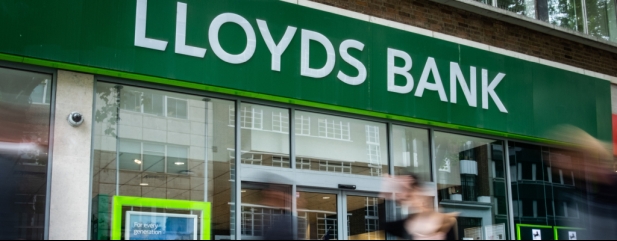Archived article
Please note that tax, investment, pension and ISA rules can change and the information and any views contained in this article may now be inaccurate.
How to analyse Lloyds Banking in five easy steps

As this is the last instalment in our five step stock analysis series (and we would encourage you to go back and read parts one, two and three, we’ve decided to do something a bit different and examine a bank. This means using different measures of profitability, returns and valuation.
To analyse a bank, you need to understand what it does, how it uses its balance sheet to make money and the quality of its assets.
While this may sound a bit daunting, the good news is most banks do the same thing so once you have looked at one the chances are you can transfer those skills to looking at others and start making comparisons.
STEP ONE: NET INTEREST MARGIN
At its core, banking is quite simple: you borrow money from depositors at one rate on a short-term basis and lend it out at a higher rate on a long-term basis.
By charging more on loans than you pay on deposits, you make a spread known as a net interest margin.
The size of the net interest margin is determined by several things, including background interest rates, the bank’s brand power and its ability to attract depositors and borrowers, and the level of competition.
Using Lloyds Banking (LLOY) in our analysis is helpful because it is a pure ‘commercial’ bank, meaning it sticks to loans and deposits, unlike its rivals Barclays (BARC), HSBC (HSBA) and
NatWest (NWG) which all have an investment banking business and are therefore known as ‘universal’ banks.
Over much of the last decade, following the fallout from the great financial crisis and during the Covid-19 pandemic, global interest rates were so low that banks everywhere struggled to make much of a margin on their lending.
It was widely assumed that once economic growth picked up and interest rates started to rise, the banks would be able to make hay by boosting their loan books and increasing their net interest margins.
As it turns out, that window of opportunity seems to have been much smaller than analysts and investors thought, with Lloyds only being able to increase its net interest margin from an average of around 2.9% before the pandemic to 3.2% at best so far this year.
Nor is Lloyds alone – rivals Barclays and NatWest posted similar net interest margins in the first half, missing market expectations, and Barclays hinted at a weaker second half to come.
On the one hand, high interest rates have dampened demand for credit, while on the other depositors have moved money out of non-interest-bearing accounts in search of better rates on their savings meaning banks have had to compete aggressively for deposits to fund their lending.
With interest rates having jumped from 1.75% a year ago to 5.25% at the time of writing, and analysts forecasting a peak of 6% for this cycle, we suspect loan demand will be choked off further while deposit rates will have to stay high to attract customers, so the idea that banks are big winners in this environment seems to be a fallacy.
STEP TWO: LOOKING AT BAD DEBTS
Another unavoidable consequence of interest rates rising so quickly is firms which borrowed heavily when money was cheap are finding themselves in difficulty when it comes to paying interest on their loans or finding new sources of finance.
The latest figures from the UK Insolvency Service show the number of compulsory liquidations in July 2023 was 81% higher than a year ago, due to a combination of higher rates and the withdrawal of government support measures in response to the pandemic, while the number of CVAs (company voluntary arrangements) was also higher.
As a bank, the trick is to know your customers so you don’t lend money to people who aren’t likely to pay it back in the first place, a process which nowadays is done by clever risk-management software rather than by the branch manager as it was in the past.
Staying on top of what the industry quaintly refers to as ‘non-performing’ loans means having to put aside provisions for those that are either ‘bad’, meaning they need to be written off in their entirety now, or ‘doubtful’, meaning full repayment is questionable and may not happen, making it necessary to put aside a contingency today.
Sometimes, banks put together packages of non-performing loans and sell them to non-bank finance firms like hedge funds just to try to recoup least some of the money they are owed, and the hedge funds then use a collection agency to chase up the repayment, but clearly the lower the level of bad loans to begin with the better the bank’s risk management tools.
Lloyds is the UK’s largest lender thanks to its entrenched position in the mortgage market, courtesy of its ownership of the Halifax building society, and mortgages are by their nature long-term but more importantly backed by property assets.
Therefore, in a worst-case scenario, if a homeowner couldn’t pay their mortgage the bank could take possession of the house, although more likely it would reach an agreement with the borrower which allowed them to pay what they can while still keeping a roof over their heads.
Lloyds’ bad loan ratio – or what it calls its asset quality ratio – is very low for now, but with the full effect of the past year’s sharp rise in interest rates still to feed through it is quite possible this ratio will increase and the bank will have to set aside much more by way of provisions.
STEP THREE: MEASURING RETURNS
Whereas with other companies in our analysis like Greggs (GRG) and Unilever (ULVR) we measured their return on capital employed, with banks the most frequently used yardstick is return on tangible equity or RoTe.
Simply put, RoTe is profits after tax divided by the bank’s common equity which excludes any preference shares.
In a recent edition of Financier Worldwide Magazine, Shaun Taylor, chief financial officer for the Americas at Standard Chartered (STAN), called RoTe ‘the most important metric in the banking sector’ and argued banks should adopt it internally.
‘Everyone has a role to play in improving RoTE and by enabling everyone in a financial institution to understand its importance, it becomes the norm to think about it in everyday decision making, regardless of geography, sector or product. It can be applied to big strategic decisions like entering and exiting markets, just as it can be applied to smaller ones such as infrastructure spend and headcount.
‘RoTE makes it possible to align everyone to thinking commercially, focusing on how they can help make better or faster decisions with respect to uplifting their bank’s RoTE, and to look at it from a return perspective with one metric, as opposed to a cost perspective with multiple metrics. Aligning all stakeholders – internal and external – with the mindset of optimising for RoTE is important to deliver the best financial outcomes for any bank.’
As a rule, investors expect banks to generate a RoTe more than 10% and there is a strong correlation between returns and share price, with banks that have a higher return generally having higher share prices.
Here it must be said Lloyds doesn’t fare very well, with RoTe seeming to swing around wildly as net profits wax and wane – even smoothing the returns over 12 months doesn’t disguise the variations although it does suggest underlying returns are over 10% in ‘normal’ times.
STEP FOUR: KEEPING TABS ON COSTS
As Standard Chartered’s Taylor suggests, using RoTe as an internal benchmark and working to optimise returns benefits all stakeholders and one obvious way to do that is to take costs out of the business.
Besides the cost of attracting deposits, which is largely set by the market, banks have sizeable cost bases in terms of their physical operations so running a tight ship is essential.
Rather as managers like Terry Smith always look at gross margins to see how much profit a business makes for every pound of sales it generates; with banks we can look at their cost-to-income ratio.
Whereas with gross margins it’s a case of the higher the better, with cost-to-income we want to see as low a number as possible and ideally something below 50%.
In the case of Lloyds, day-to-day operating costs aren’t that excessive and pre-pandemic the bank largely kept its cost-to-income ratio below 50%.
Post-pandemic it has been a different matter, with the bank having to take charges for ‘remediations’, i.e., fines from the regulator for misconduct, restructuring costs and investments in new businesses, but it looks as though the trend is downward once more.
STEP FIVE: HOW TO VALUE A BANK
As should be obvious by now, banks are a different beast so rather than valuing them on price-to-earnings or EV (enterprise value) to EBITDA (earnings before interest, taxes, depreciation and amortisation) we look at price to tangible net assets or what is known as ‘book value’.
In the case of Lloyds, tangible net asset value per share remained remarkably resilient during the pandemic, but in the last 12 months it has been on a downward path as rising interest rates have impacted the bank’s cash-flow hedge reserve.
It is possible that once base rates stabilise – whether that is above or below 6% we don’t know – tangible net assets will recover, but as it stands it doesn’t look as though potential investors are getting great value for their money.
While the bank has said it wants to generate sustainable RoTe above 10%, and it has a handle on costs, if the economy turns down sharply as a result of further rate hikes the risks to the balance sheet and earnings will increase.
Paying roughly book value at this point in the cycle, when more of the bank’s assets will likely turn bad soon, doesn’t seem like a great investment to us in terms of risk versus reward.
Important information:
These articles are provided by Shares magazine which is published by AJ Bell Media, a part of AJ Bell. Shares is not written by AJ Bell.
Shares is provided for your general information and use and is not a personal recommendation to invest. It is not intended to be relied upon by you in making or not making any investment decisions. The investments referred to in these articles will not be suitable for all investors. If in doubt please seek appropriate independent financial advice.
Investors acting on the information in these articles do so at their own risk and AJ Bell Media and its staff do not accept liability for losses suffered by investors as a result of their investment decisions.
Issue contents
Feature
Great Ideas
News
- Market faces up to ‘5% world’ ahead of Powell’s Jackson Hole appearance
- Why Intel’s blocked Israeli chip deal could pose threat to technology M&A
- Hotel groups Dalata and PPHE look to benefit from strong summer trading trends
- Strong domestic economy and improving balance sheet see Bank of Georgia shares surge
- VinFast zooms on to US market as investors pick holes in Tesla’s China strategy
- Barbenheimer can’t even save Everyman Media with the shares down 30% so far in 2023
- Analysts cautious after a 50% AI-driven rally in Salesforce shares

 magazine
magazine








